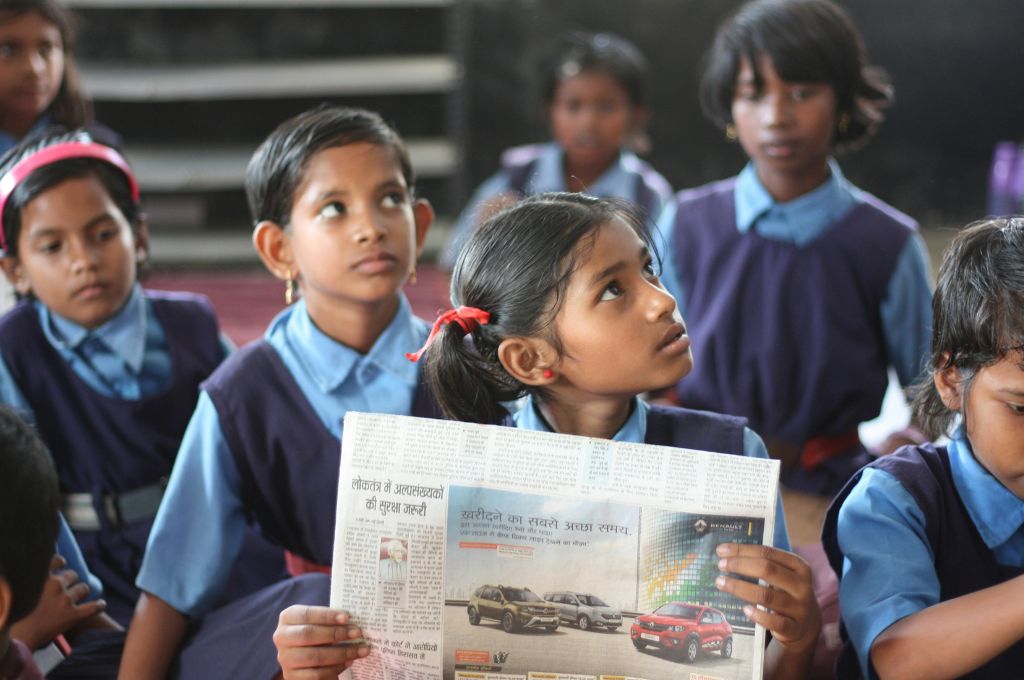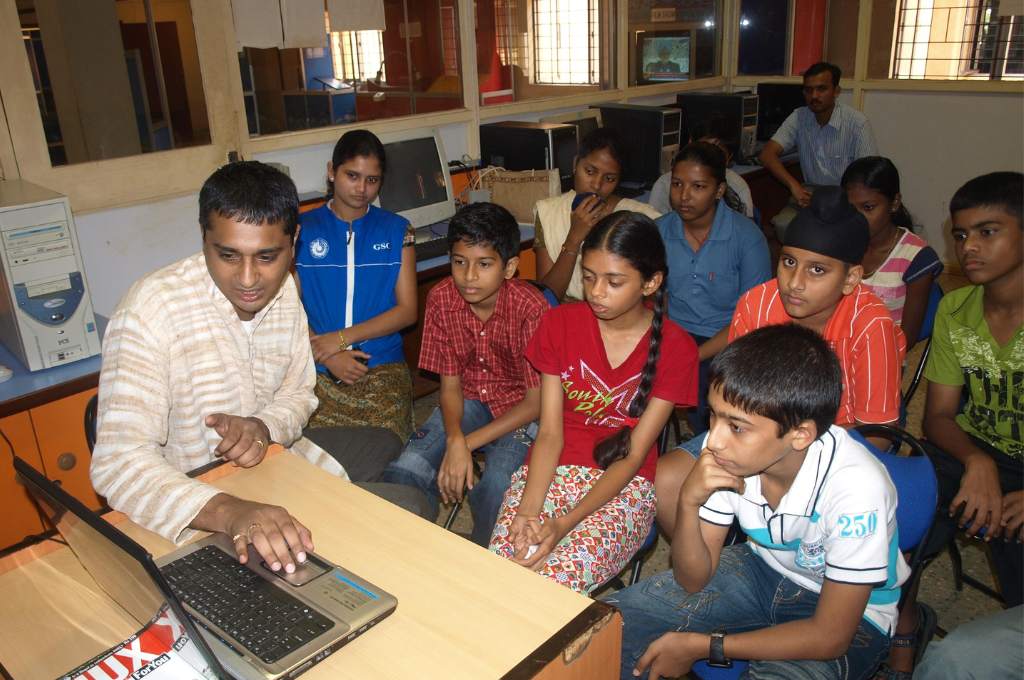Everyone agrees India’s public education is in a dire state. The blame for this is typically heaped upon bad infrastructure, teacher absenteeism, poor student attendance, inputs-based monitoring, and inadequate teacher preparation programmes. While these issues are valid, all of them taken together do not fully explain the learning crisis apparent in our classrooms.
Let’s start with infrastructure. In the wake of the Right to Education Act 2010, school infrastructure has improved tremendously. While usability is still being addressed, much progress has been made in terms of school access, and availability of drinking water and toilets. Most children are enrolled in some school and 70 percent attend school regularly.

Drawing by Sumer Vaidya, age 10
Yes, teacher absenteeism continues to plague the system, but it is precisely that—a systemic issue instead of something specific to government school teachers as a people. A recent six-state study by Azim Premji Foundation reported that, while 20 percent of teachers were not found in school on average, most teachers were not ‘absent’; they were away on training or official work, sitting in the state headquarters or on casual leave.
Actual truancy rates were 2.5 percent, which is close to absenteeism rates at any large organisation. Even this small amount of absenteeism needs correction, but clearly absenteeism is not the obstacle to student growth.
So, if broadly teachers are showing up, and students are turning up, and classrooms and textbooks are available, what is preventing lakhs of children from acquiring basic literacy and numeracy?
Current policy discourse suggests that one of the issues is a lack of student and curriculum assessment. The Ministry for Human Resource and Development (MHRD) is pushing for greater student assessment and states have been conducting ‘State Learning Achievement Surveys’ (SLAS).
Standardised assessments are a lot of work and will require a good amount of resources. One must ask, therefore, what are the chances of this ‘solution’ working?
Standardised tests emerged in the post-industrial era when factories needed many labourers but few thinkers.
To start with, let’s briefly understand large-scale standardised assessments. In the 20th century standardised tests were institutionalised in almost all domains, especially in fields related to education and employment. A standardised test is an assessment that is rigid, has a pre-determined marking scheme and is administered to a large base of students. Such tests emerged in the post-industrial era when factories and large business units required many labourers but few thinkers.
As a result, a test that told you a little about everyone was preferred to an alternative that told you a lot about one person. This was especially so because the former was more cost effective. In other words, standardised assessments were designed to suit a system instead of an individual.
Today, the economy is markedly shifting in favour of the individual. The gig and contract economy in the West has grown tremendously in the past decade and 9-5 jobs are shrinking. In India too, as automation increases, individual adaptability will become the most salient skill. Therefore, policy measures today must not return to old world assessment approaches—one test to rule them all, one test to find them.
Policy measures today must not return to old world assessment approaches—one test to rule them all, one test to find them.
Earlier, customising a test to suit 200 million children was infeasible but that is no longer true. Today, adaptive tests allow students to solve problems at their own pace, and item-wise analysis provides data on gaps in understanding, which in-turn enables teachers to provide remediation real-time.
Programmes like Mindspark are doing this in their centres. Instead of getting all schools to administer paper pencil tests, pushing digital infrastructure at the school level for better testing is a more worthwhile pursuit. The current government has a strong appetite for implementation and getting schools connected to good software can be done.
However, the main obstacle is not technology or implementation. Instead, the issue is one of mindset. Educational reform remains top down, and the state/national level conversation is always around aggregate data that hides more than it shows.
Teachers also mark off test papers with the purpose of sending data upwards rather than using it inside the classroom. If you ask most teachers why this data is being collected, they will tell you it is for the higher ups, or that tests make students take school seriously. Seldom will a teacher articulate how test results can be used to improve teaching. And that is the Achilles heel of test-based reform.
Unless teachers change their teaching practices, nothing will change. The real drivers of change at the school level are the teachers and school principals, and the culture of learning they bring into schools. But culture is difficult to engineer so it is relegated to the ‘oh and also, culture’ statement at the end of meetings. This is worrying since heaps of evidence suggest culture impacts student outcomes.
Evidence suggests that the culture of learning impacts student outcomes.
PISA finds that students who report higher confidence in their abilities perform better and students whose parents or teachers have higher expectations of them perform better. Academia is flowing with research on social-emotional learning, and now perhaps even music, and their links to academic performance.
If one takes a system approach, these findings seem irrelevant since there is no practical way to apply this to a system. But if one is on the side of children, suddenly these findings become important. One feels compelled to address school culture and for that teachers and principals are the main levers.
Therefore, if student learning needs to be improved, the policy prescription is as follows:
- Scrap old style tests and put in place technology for personalised assessment
- Focus on data analysis and use at the classroom level
- Decentralise the reform process such that it empowers school principals and teachers to bring about these changes.
All three measures target the individual student and the classroom. If classrooms change, schools will change. If schools change, the system will.




